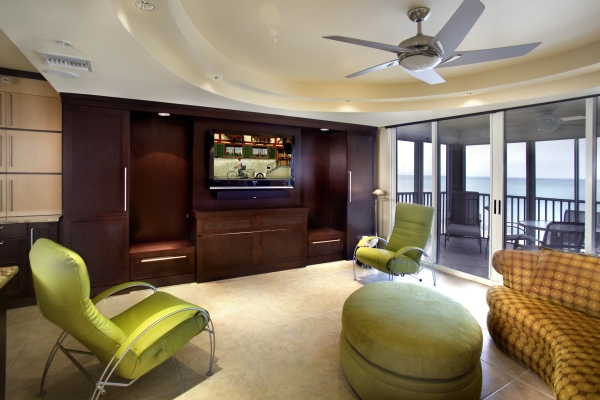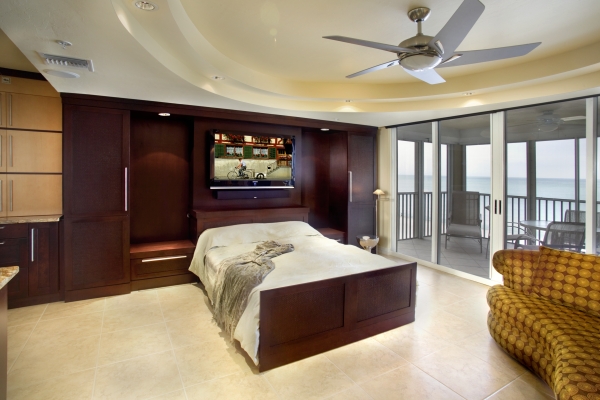Asian ProSource
Learn about our china sourcing service. We helped over 600 client succeed in the last 20 years.
Friday, April 8, 2011
China Sourcing and Product Development. Steps to success
2. Sourcing China Suppliers In order to import from China you need to find the right suppliers. You will need to conduct serious due diligence or have it conducted on your behalf, on the suppliers you are considering engaging to make your product. The safest way to have this due diligence done is by professionals at Asian ProSource with experience and knowledge of culture in China and the relevant negotiation skills, with a team on the ground in China who can speak the language. Right in the beginning, in order to negotiate the most accurate price for your product you will need to send detailed product specifications to the Asian ProSource office. This will help minimize any changes to prices in the future. Remember it is your responsibility to comply with any product legislation or compliance standards when bringing the product into your home country. Once we have found the right supplier we will negotiate with the supplier on your behalf. This includes shipping terms and the payment terms the supplier accepts. This is extremely important to get right in the beginning to save you problems or issues that may arise in the future. Timeline – Sourcing the right supplier in China can take anywhere between 1-4 weeks depending on the complexity of your product and the method you use to source them.
3. Sampling Process . Once we have found the right supplier to import from China, we will need to negotiate for and source the first samples of your product. In some instances this may be a free exercise or it may be costly depending on the complexity of your product or how custom you need it made. Timeline – Sourcing samples can take anywhere between 2-4 weeks, once again depending on the complexity of your product but also on factory lead times, whether initial samples are correct or need changes etc.
4. Place Purchase orders for mass production . Once Asian ProSource has sourced product samples that are up to your standard including packaging, quality and price we will need to generate an initial purchase order to send to the supplier you have sourced in China. This will need to outline the specifications of your product in detail and the terms of trade. Negotiating these terms well in the beginning will help you immensely in the future, especially if any issues arise. Once your supplier in China receives this, they will begin the mass production of your product. Timeline – The time taken to place purchase orders will depend on your knowledge of the content required and your experience in placing orders. The amount of time can be reduced by employing the services of experienced professional, such as Asian ProSource, to help you with this process. The timeline of mass production in general would be up to 4 weeks, but this will also depend on the complexity of your product and the amount ordered.
5. Quality Control At some stage during mass production you need to make sure that the quality of your products is checked against your initial product specifications. It is a great idea to fill out a product specification checklist that can be used to check the quality against. This will ensure that the products you are wishing to import from China meet the required quality standards and legislation, are actually what you have ordered and paid for and are up to your quality standards. Timeline- This will be completed during the mass production process and may have an effect of 1-3 days depending on any issues that may arise.
6. Importing your Products from China. Here is where you will need to engage a shipping company or freight forwarder to ship your products into your home country and clear them through customs, in order to get them to your door. You should choose a shipper who lets you track the transportation and customs clearance of your products when they are in transit. Asian ProSource handles door to door logistics for our clients, so this is something that you really don’t have to worry about. Timeline - It will usually take up to 4-5 weeks to import your products from China, have them cleared at customs and at your door.
Tuesday, March 15, 2011
The Story of Shenzen...the mecca of the Chinese manufacturing world
What all this refers to is the establishment, in the late summer of 1980, of Shenzhen as a “special economic zone,” where few limits or controls would apply and businesses from around the world would be invited to set up shop. Shenzhen was attractive as an experimental locale, not just because it was so close to Hong Kong, with its efficient harbor and airport, but also because it was so far from Beijing. If the experiment went wrong, the consequences could be more easily contained in this southern extremity of the country. Nearly every rule that might restrict business development was changed or removed in Shenzhen. Several free-trade processing zones were established, where materials and machinery coming in and exports going out would be exempt from the usual duties or taxes.
Modern Shenzhen has traits that Americans would associate with a booming Sun Belt city—transient, rough, unmannered, full of opportunity—and that characterized Manchester, Detroit, Chicago, Los Angeles at their times of fastest growth.
The foreigners in their 30s through 50s who come to Shanghai are often financiers, consultants, or lawyers. They tend to be lean, with good suits and haircuts. Those in Beijing are often diplomats, academics, or from foundations or NGOs. They look a little less polished. The scene in and around Shenzhen is different. It is an international group—Americans, Taiwanese, Europeans, Japanese—of a single class. Virtually all of them are designers, engineers, or buyers from foreign companies who have come to meet with Chinese factory owners. The Americans in the group tend to be beefier than the Shanghai-Beijing crowd, and more Midwestern-looking. Some wear company shirts or nylon jackets with their company’s logo on the pocket.
That so many people are in motion gives Shenzhen and surrounding areas a rootless, transient quality. The natural language of southern China is Cantonese, but in the factory cities the lingua franca is Mandarin, the language that people from different parts of China are likeliest to share. “I don’t like it here,” a Chinese manager originally from Beijing told me, three years into a work assignment to Shenzhen. “There are no roots or culture.” “For the first few weeks I was here, I thought it was soulless,” Liam Casey says of the town that has been his home for 10 years. “But like any fast-moving place, the activity is the character. It’s like New York. You arrive at the airport and go downtown, and when you get out of that cab, no one knows where you came from. You could have been there one hour, you could have been there 10 years—no one can tell. It’s similar here, which makes it exciting.” Casey told me that, to him, Shanghai felt slow “and made for tourists.” Indeed, I am regularly surprised to find that people stroll rather than stride along the sidewalks of Shanghai: It’s a busy city with slow pedestrians. Or maybe Casey’s outlook is contagious.
Another great flow into Shenzhen and similar cities is of entrepreneurs who have come and set up factories. The point of the Shenzhen liberalizations was less to foster any one industry than to make it easy for businesses in general to get a start.
One is the enormous flow of people, mainly young and unschooled, from China’s farms and villages to Shenzhen and similar cities. Some arrive with a factory job already arranged by relatives or fixers; some come to the cities and then look for work. In the movie version of Balzac and the Little Chinese Seamstress, two teenaged men from the city befriend a young woman in the mountain village where they have been sent for rustication during the Cultural Revolution. One day the young woman unexpectedly leaves. She has gone to “try her luck in a big city,” her grandfather tells them. “She said she wanted a new life.” The new life is in Shenzhen.
Multiplied millions of times, and perhaps lacking the specific drama of the Balzac tale, this is the story of the factory towns. As in the novel, many of the migrants are young women. In the light-manufacturing operations I have seen in the Pearl River Delta and around Shanghai, the workforce is predominantly female. Signing on with a factory essentially means making your job your life. Workers who come to the big coastal factory centers either arrive, like the little seamstress, before they have a spouse or children, or leave their dependents at home with grandparents, aunts, or uncles. At the electronics and household-goods factories, including many I’ve seen, the pay is between 900 and 1,200 RMB per month, or about $115 to $155. In the villages the workers left, a farm family’s cash earnings might be a few thousand RMB per year. Pay is generally lowest, and discipline toughest, at factories owned and managed by Taiwanese or mainland Chinese companies. The gigantic Foxconn (run by its founder, Terry Guo of Taiwan) is known for a militaristic organization and approach. Jobs with Western firms are the cushiest but are also rare, since the big European and American companies buy mainly from local subcontractors. Casey says that monthly pay in some factories he owns is several hundred RMB more than the local average. His goal is to retain workers for longer than the standard few-year stint, allowing them to develop greater skills and a sense of company spirit.
A factory work shift is typically 12 hours, usually with two breaks for meals (subsidized or free), six or seven days per week. Whenever the action lets up—if the assembly line is down for some reason, if a worker has spare time at a meal break—many people place their heads down on the table in front of them and appear to fall asleep instantly. Chinese law says that the standard workweek is 40 hours, so this means a lot of overtime, which is included in the pay rates above. Since their home village may be several days’ travel by train and bus, workers from the hinterland usually go back only once a year. They all go at the same time—during the “Spring Festival,” or Chinese New Year, when ports and factories effectively close for a week or so and the nation’s transport system is choked. “The people here work hard,” an American manager in a U.S.-owned plant told me. “They’re young. They’re quick. There’s none of this ‘I have to go pick up the kids’ nonsense you get in the States.”
At every electronics factory I’ve seen, each person on an assembly line has a bunch of documents posted by her workstation: her photo, name, and employee number, often the instructions she is to follow in both English and Chinese. Often too there’s a visible sign of how well she’s doing. For the production line as a whole there are hourly totals of target and actual production, plus allowable and actual defect levels. At several Taiwanese-owned factories I’ve seen, the indicator of individual performance is a childish outline drawing of a tree with leaves. After each day’s shift one of the tree’s leaves is filled in with a colored marker, either red or green. If the leaf is green, the worker has met her quota and caused no problems. If it’s red, a defect has been traced back to her workstation. One red leaf per month is within tolerance; two is a problem.
As in all previous great waves of industrialization, many people end up staying in town; that’s why Shenzhen has grown so large. But more than was the case during America’s or England’s booms in factory work, many rural people, especially the young women, work for two or three years and then go back to the country with their savings. In their village they open a shop, marry a local man and start a family, buy land, or use their earnings to help the relatives still at home.
Life in the factories is obviously hard, and in the heavy- industry works it is very dangerous. As the foreman of a Taiwanese electronics factory put it to me when I asked him about rough working conditions, “Have you ever seen a Chinese farm?” An American industrial designer who works in China told me about a U.S. academic who toured his factory and was horrified to see young female workers chained to their stations. What she saw was actually the grounding wire that is mandatory in most electronics plants. Each person on the assembly line has a Velcro band around her wrist, which is connected to the worktable to avoid a static- electricity buildup that could destroy computer chips.
That so many people are in motion gives Shenzhen and surrounding areas a rootless, transient quality. The natural language of southern China is Cantonese, but in the factory cities the lingua franca is Mandarin, the language that people from different parts of China are likeliest to share.
Many entrepreneurs attracted by the offer came from Taiwan, whose economy is characterized by small, mainly family-owned firms like those that now abound in southern China. Overall, mainland China’s development model is closer to Taiwan’s than to Japan’s or Korea’s. In all these countries and throughout East Asia, governments use many tools to maximize industrial output: tax policy, trading rules, currency values, and so on. But Japanese and Korean policy has tended to emphasize the welfare of large, national-champion firms—Mitsubishi and Toyota, Lucky Gold Star and Samsung—whereas Taiwan’s exporters have been thousands of small firms, a few of which grew large. China is, of course, vaster than the other countries combined, but its export-oriented companies are small. One reason for the atomization is pervasive mistrust and corruption, plus a shaky rule of law. Even Foxconn, China’s largest exporter, was only No. 206 on last year’s Fortune Global 500 list of the biggest companies in the world. When foreigners have trouble entering the Japanese or Korean markets, it is often because they run up against barriers protecting big, well-known local interests. The problem in China is typically the opposite: Foreigners don’t know where to start or whom to deal with in the chaos of small, indistinguishable firms.
It's a good thing that Asian ProSource is here to hold your hand through all of this chaos. Asian ProSource is a premier manufacturing sourcing agency with offices in both the US in China. They specialize in custom manufacturing, prototyping and helping innovators leverage the Chinese manufacturing market.
Thursday, February 17, 2011
Product sourcing in China
Monday, January 17, 2011
Steps to successfully buy in China...
1. Find a Suitable Supplier.
Many importers find a nice sample at a trade show, get a good quotation from the company believed to have manufactured the sample and then think their supplier search has ended. It is very risky to choose your supplier in this way. Online directories (e.g. Alibaba) and trade shows are only a starting point. Suppliers pay to be listed or to exhibit, and they are not rigorously screened.
If your contact claims to own a factory, you can run a background check on his company to confirm this claim. Then you should go and see the factory or order a capacity audit (around USD$1,000).
If your orders are small, it is usually best to avoid very large manufacturers because they will probably quote high prices and not care about your orders. However, smaller factories usually need closer monitoring, especially on the first production run. Be forewarned: showing a nice factory and then subcontracting production to a smaller workshop is very common and the source of many quality problems.
2. Clearly Define Your Expected Product
Some buyers approve a pre-production sample and a pro forma invoice and then wire the deposit. This is not enough. What about your own country's safety standards? What about your product's labeling? Will the packaging be strong enough to protect your goods during freight? These are just some of the many things on which you and your supplier should reach written agreement before money changes hands.
I recently worked with an American importer who had told its Chinese supplier that "the quality standard should be the same as that of your other US customers." Of course when this American importer started experiencing problems, the Chinese supplier replied by claiming that "our other US customers never complain about this, so it is not a problem."
The key is to write your product expectations into a detailed specification sheet that leaves no room to interpretation. Your methods for measuring and testing these specifications, along with the tolerances, should also be included in this document. And your contract should set forth specific dollar penalties if the specifications are not met.
3. Negotiate Reasonable Payment Terms
It can get a bit more complex if a mold or special tooling is necessary during development.
Those vendors who insist on more favorable terms are usually seeking to trap you. I recently worked with a buyer who was so confident he would receive a good product he paid the full price before production. Needless to say, delivery came late and there were quality problems. He had nothing to use to leverage appropriate corrective action.
4. Control Your Product Quality in the Factory
How do you make sure your supplier met your product specifications? By going to the factory yourself and monitoring for this or by appointing a third party inspection firm to manage this process for you. The most common type of quality control is a final random inspection of a statistically valid sample. This statistically valid sample gives professional inspectors enough to quickly and cost effectively draw conclusions about an entire production run.
In most cases, quality control should also take place earlier so as to catch problems before all production is complete. In these cases, an inspection should take place either before the components are embedded in the final goods or when the first finished products just get off the lines. In these cases, some samples can be picked up and sent for lab testing.
To take full advantage of QC inspections you should first have defined the product spec sheet, which then becomes your inspector's checklist.
5. Formalizing the Previous Steps
Most importers are not aware of two facts. First, it is possible for an importer to sue a Chinese supplier, but it only makes sense to do it in China. Second, your purchase orders will aid in your supplier's defense; they almost certainly will not help you.
To minimize your risks, you should buy your product pursuant to an OEM agreement (preferably one that is in Chinese). This contract will decrease your chances of problems and give you greater leverage should a problem occur.
My last bit of advice is that you be sure to put this entire system in place before you start negotiating with potential suppliers. Doing this will let them know that you are a professional importer and they will respect you for this. They will be more likely to agree to your requests because they will know that you can easily find another supplier. Perhaps most importantly, it will be much more difficult and much less effective if you start scrambling to put this system in place after you have already placed your order.
As I mentioned in the beginning, here at Asian Prosource, we have been handling these negotiations for over 20 years. we have an office in the US and in China to help support you and protect you. Call us today for a free consultation!
(702) 616-2298
contact@asianprosource.com
Monday, December 20, 2010
What are the differences between American and Chinese business principles?
1.Relationship first!
Chinese people as a whole value relationship much more than American people do. In business the initial effort is usually 80% - 90% focussed on developing the relationship. In fact, the objective of a business meeting is to develop a relationship (in Chinese terminology; a“cooperation”). Opposite to the American approach of “closing” the deal. American business culture has common phrases like“business is business” and “we don't have to be friends to do business”, implying the order of importance. Chinese practice the opposite, we have to be friends to do business.
2. “How is biz?”
Another big difference! It is not only quite inappropriate, but can also be considered “rude” to ask, how is your business? or even more offensive ask for sales figures. Chinese business people will only volunteer this information to a close friend or people they have a very close relationship with. Opposite to the American presentation (sometimes required) of a detail company profile prior to initiating any negotiation.
3. The Business Plan.
In Chinese business generally speaking the request of abusiness plan will incite a response like, oh... you don't trust us? In China the majority of business is done over days of dinners, lunches, drinking tea and wine and talking about life in general. Business will develop out of these encounters aimed at developing trust and relationship sprinkled with business details nowand then. Opposite to the methodical American approach, concept, features, requirements, sales, marketing, costs of goods, financial statements, etc. ManyChinese people will literally invest millions of dollars without nothing more than a handshake, it is all about trust.
4. The “Face” Game.
Chinese culture and particularly business revolves aroundthe value of your “face” to others. “Face”; defined as how others may see you; asin your level of status in society or your ability to command respect and trust fromothers. For American business people this is extremely difficult to deal with as it flies directly in the path of disclosure and transparency. For Chinese, the very fact that you would be asked for details takes away from you “face” value. A simple example of this concept is the fact that Chinese people will likely never allow you to pay for a meal or entertainment as this is done by the person with the most “face” in the situation.
5. Family Business.
In America the word “Nepotism” is not a complementary statement, in fact you can land in the middle of legal lissues for favoring a family member for your business rather than a more qualified stranger. Not in China! It is possibly one of thes trongest unwritten rules of business, a business owner will carefully select family members and close friends for the most critical positions in a business. This is party
due to trust and partly due to the “face” issue, qualifications are largely overlooked.
6. Sales= Alcohol+Karaoke.
In Chinese business sales is hardly regarded as a profession and most often is only looked as a sort of functional entertainer. While it is true that America has a great deal of this type of sales, it is also regarded as “undesirable” by most companies, particularly if you look at it in the Chinese business context. China's smaller businesses (under $50 million in sales) have primarily two types of sales people; very young people (mostly women 20-24years old) and older men (40-50 years old). The expectation of these sales people is almost 100% to work on cultivating relationships, so they must be very good at hosting. A good host in Chinese terms is one that has the ability to conduct the rituals of eating food, drinking alcohol and entertaining at KTVs (karaoke bars) with all the finesse of giving the client a VIP treatment (big “face”). Opposite to American counterparts Chinese sales people are not really expected
to know much about the product or the company they represent.
7. Marketing is a dirty word.
In Chinese smaller companies the word Marketing is most often interpreted as a “multi-level marketing scam”. There is very little understanding of the function of marketing or the need for it. In fact advertising is done completely in a “shot-gun” approach, it is invasive, in your face and breaks every rule known to American marketers as the do's and don'ts of promoting your products or services. The fact that marketing is an unknown concept in most realms in China is no surprise if you add the first 6 points of this post. This gives reason for a great deal of the “copy” mentality, if it sold well for Nike or Sony or
Ping, it will sell well for our company! There are also a large number of products that are designed, developed and manufactured without knowing if there is even a market for them.
8. Introductions.
It is very common in Chinese meetings that you may sit with agroup of people that will never be be formally introduced. On counter viewAmerican common business rules not only require introducing the people attending a meeting, but also describing their relevance to the topic of the meeting. This is quite uncommon in many Chinese business meetings and as a result it maybe difficult to identify who are the key players. However, if you are able to speak/understand mandarin and are familiar with the nuances of addressing someone by name, you will likely be able to deduce order of importance by the title (similar to Mister or Chief) attached to the person's name,if they are ever introduced.
9. Concluding a meeting.
This difference probably is the most frustrating to both Chinese and Americans when doing business together. Chinese business is largely inconclusive, open ended and uncommitted. American business is NOT finished until there is a conclusion, if thereis no deal, no next step; it is considered an unsuccessful meeting! In Chinesebusiness it is considered rude to try toforce an answer or a conclusion. This issue quite often can derail a negotiationas American business people have it ingrained to achieve an “end”, whileChinese are focused on developing arelationship or a “cooperation”.
10. Starting a Business/Company.
In China it is almost a requirement to have 100% of the infrastructure for a business orcompany developed even before getting a business license. This is somewhat a cultural issue and somewhat a regulatory one. Local governments will actuallyinspect and take photographs of the intended business location prior to issuing alicense. The expectation is that you have to largely look like the business which you are applying for; that is to say if you are going to manufacture shoes, you are expected to have a shoe factory set up, machines, people, offices, etc. This fact coupled with the absence of a business plan or market study makes it anabsolutely incomprehensible logic for American business people. However, it is
important to note that culturally Chinese people have an extreme level ofconfidence and belief in their own capabilities and venture into anything with anad-hoc approach of making things happen as they go. This is counter parallel to American business culture which also has a deep belief in the innate ability toaccomplish, however, backed by data and facts prior to taking step one.
There are definitely exceptions and things are changing at a phenomenal speed in China. Many Chinese are now returning from studying business in the US or Europe and are bringing back with them western ways of doing business into the evolving Chinese business environment. There is also a great deal of demand for American business know-how and some companies are beginning to value American consulting services, particularly when it comes to quality manufacturing methodologies and structured business management. Of course you could always leave this to the pros and let us be your China sourcing service.
Friday, December 10, 2010
Dealing with China suppliers and manufacturers involves extremely high levels of uncertainty across multiple dimensions. Asian Pro Source’s multi-lingual western management and our team of Chinese buyers and product engineers can help you spend less, minimize risk, and accelerate your company’s growth.
Utilize our 20 years of China product sourcing and in-Asia business expertise to manage your entire outsourcing process, and minimize risk by contracting with a US corporation.
Our services include:
◦China Products Manufacturer Qualification and Selection
◦Competitive Quote Solicitations
◦Chinese Prototype Manufacturing
◦Negotiation and Contract Formation
◦Quality Control and Production Management
◦Door-to-Door Logistics and Customs Clearance Management
Friday, December 3, 2010
Fall Newsletter |
Asian ProSource - China Sourcing |
|||||
|
 |
|||||
|
||||||
|
||||||
Click to view this email in a browser If you no longer wish to receive these emails, please reply to this message with "Unsubscribe" in the subject line or simply click on the following link: Unsubscribe |
Click here to forward this email to a friend |
Asian Pro Source 9775S. Maryland Pkwy Suite F. #168 Las Vegas, NV 89183 |
 |




 Remy is considered to be an expert in China sourcing and manufacturing. She routinely saves companies significant money, time, and resources in their procurement from China.
Remy is considered to be an expert in China sourcing and manufacturing. She routinely saves companies significant money, time, and resources in their procurement from China.